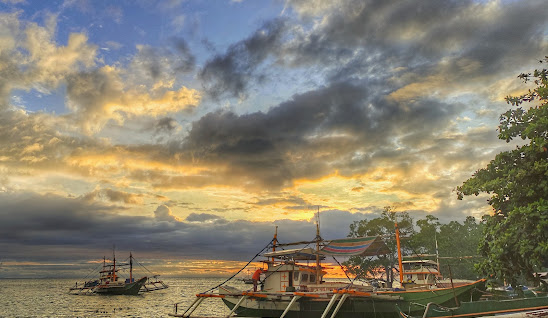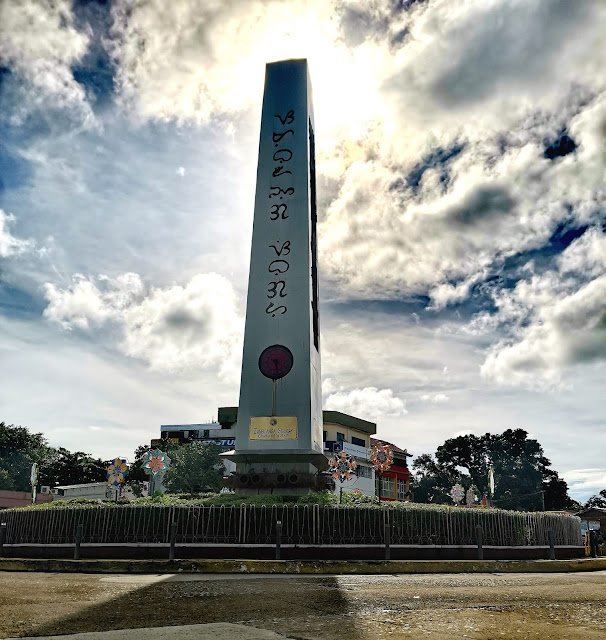San Miguel, a municipality nestled in the province of Zamboanga Del Sur, Philippines, is a place of captivating charm, rich history, and natural wonders. With its warm and welcoming community, the town invites travelers to experience its beauty and immerse themselves in its cultural heritage.
San Miguel's history dates back to its official founding on June 16, 1967. However, the town's roots can be traced even further, with indigenous communities and early settlers shaping its identity. The area was once inhabited by the Subanon people, the indigenous tribe of Zamboanga Del Sur, who lived harmoniously with the land and nature.
Natural Beauty Abounds:
San Miguel boasts a landscape of lush greenery, picturesque mountains, and serene bodies of water. The town's natural beauty makes it a haven for nature enthusiasts and adventure-seekers. Hiking trails lead to breathtaking viewpoints, offering vistas that leave visitors in awe of Mother Nature's splendor.
- A popular attraction in San Miguel, the Dolores Hot Spring offers a relaxing escape with its natural hot pools. Surrounded by verdant foliage, this hidden gem provides a soothing respite for visitors.
- Lake Maragang: The tranquil waters of Lake Maragang invite visitors to unwind and enjoy the serene ambiance. Fishing and boating opportunities add to the charm of this serene spot.
- Cave Explorations: The municipality is home to some captivating caves waiting to be explored. Adventure-seekers can venture into the depths of these natural formations and marvel at the unique rock formations and underground wonders.
Festivities and Celebrations:
San Miguel is known for its vibrant festivals that showcase the town's culture and traditions. The annual town fiesta, typically held in honor of its patron saint, is a time of joyous celebration and religious devotion. Festivities include street dances, cultural performances, and colorful parades that attract both locals and tourists.
Warm Hospitality and Local Cuisine:
One of the highlights of visiting San Miguel is the warm hospitality of its residents. The locals are known for their genuine kindness and friendliness, making visitors feel right at home. Travelers can indulge in traditional Filipino cuisine and savor local delicacies that reflect the town's culinary heritage.
Preserving Traditions and Embracing the Future:
As San Miguel moves forward, it remains committed to preserving its cultural heritage and natural treasures. The town's progress is rooted in its dedication to sustainable development and responsible tourism, ensuring that its beauty and charm are protected for generations to come.
Whether seeking an escape to nature's embrace, a journey through history, or a glimpse into the heart of Filipino culture, San Miguel, Zamboanga Del Sur, is a destination that promises an unforgettable experience. With its stunning landscapes, warm community spirit, and rich cultural offerings, San Miguel invites travelers to embrace its beauty and heritage and create cherished memories that will last a lifetime.
Getting to San Miguel, Zamboanga Del Sur, is a journey that promises scenic views and the opportunity to experience the region's natural beauty. Here are some common ways to reach San Miguel:
- By Air:
The nearest airport to San Miguel is the Pagadian Airport (PAG), which serves domestic flights from major cities in the Philippines. From the airport, travelers can take a private vehicle, taxi, or hire a local transport service to reach San Miguel. The travel time from the airport to San Miguel may take around 1 to 1.5 hours, depending on the road conditions and traffic.
- By Land:
Traveling by land is the most common way to reach San Miguel. From major cities like Pagadian or Zamboanga City, travelers can take a bus or hire a private vehicle to get to San Miguel. The town is accessible via the Zamboanga-Pagadian Road or the Zamboanga City-Ipil-Pagadian Road.
- From Pagadian City: If you are coming from Pagadian City, take a bus or van heading to the town of Dumalinao, which is the municipality adjacent to San Miguel. From Dumalinao, you can hire a tricycle or habal-habal (motorcycle-for-hire) to take you to San Miguel.
- From Zamboanga City: If you are coming from Zamboanga City, take a bus or van bound for Pagadian City. Inform the driver or conductor that you are heading to San Miguel, and they will drop you off at Dumalinao. From Dumalinao, you can hire a tricycle or habal-habal to reach San Miguel.
- By Sea:
While there is no direct sea route to San Miguel, some travelers opt to take a ferry to nearby cities like Pagadian or Zamboanga City. From the ports of these cities, land transportation options are available to reach San Miguel, as mentioned above.
Local Transportation:
Within San Miguel, local transportation options include tricycles and habal-habal, which are readily available for short trips around the town and nearby attractions. Travelers can also rent a private vehicle or join guided tours offered by local tour operators to explore the natural wonders and attractions of San Miguel.
As with any travel plans, it is recommended to check for updated transportation schedules and routes before your journey. Embrace the adventure of getting to San Miguel, and enjoy the picturesque landscapes and warm hospitality that await you in this charming municipality in Zamboanga Del Sur.



